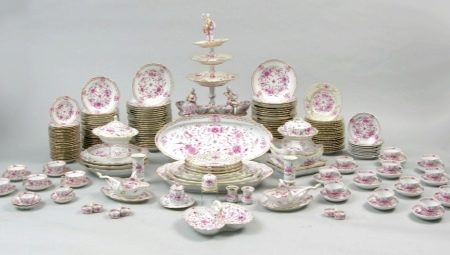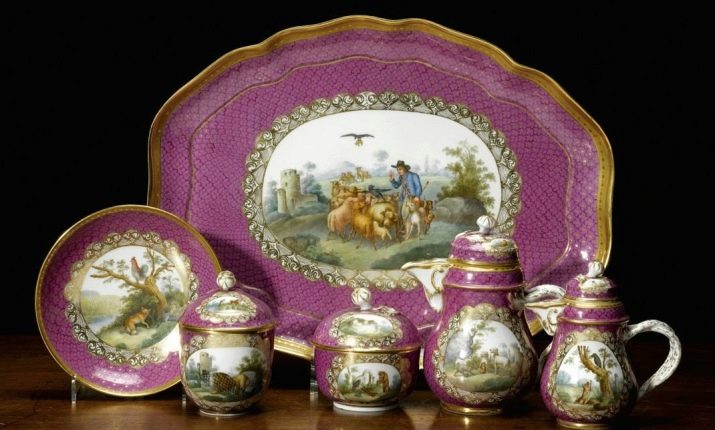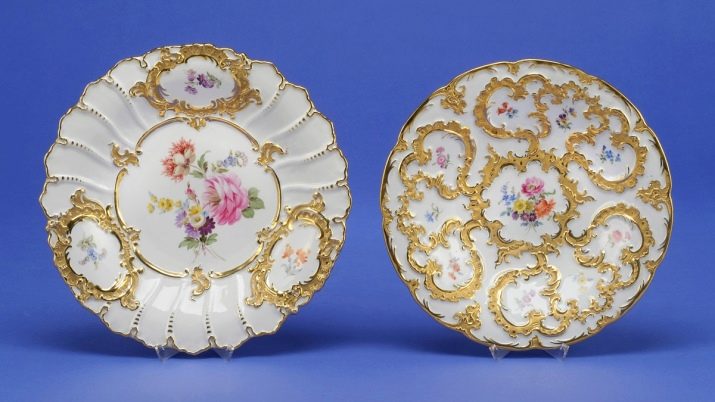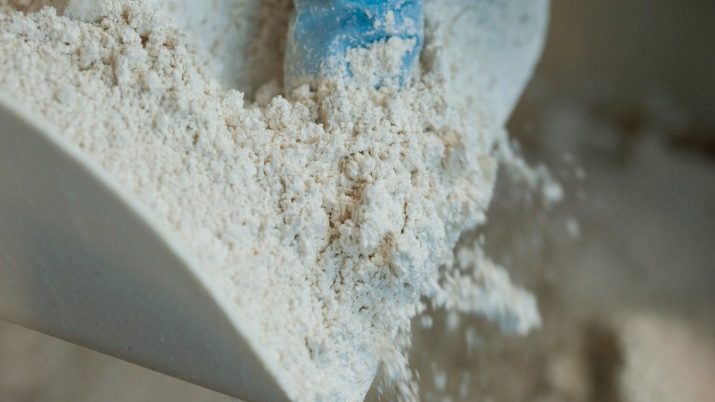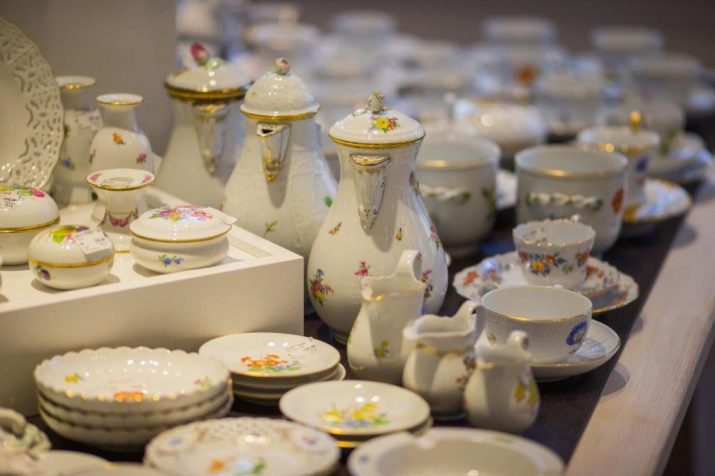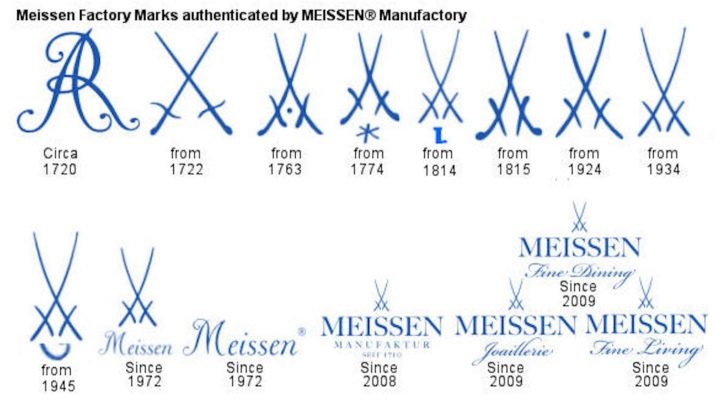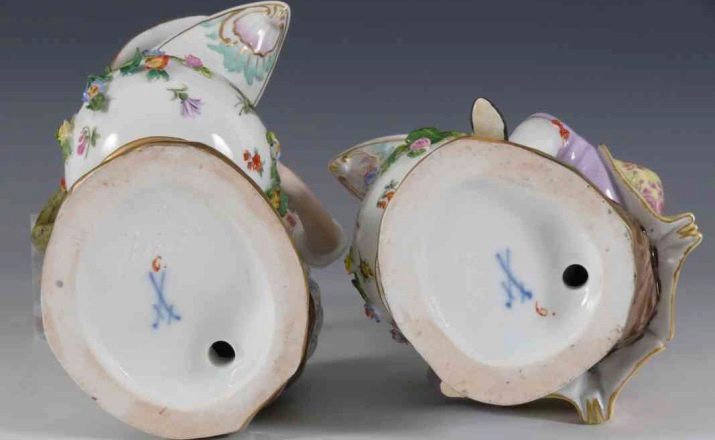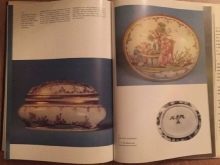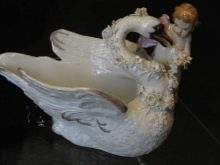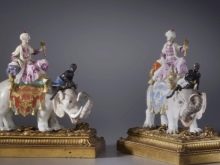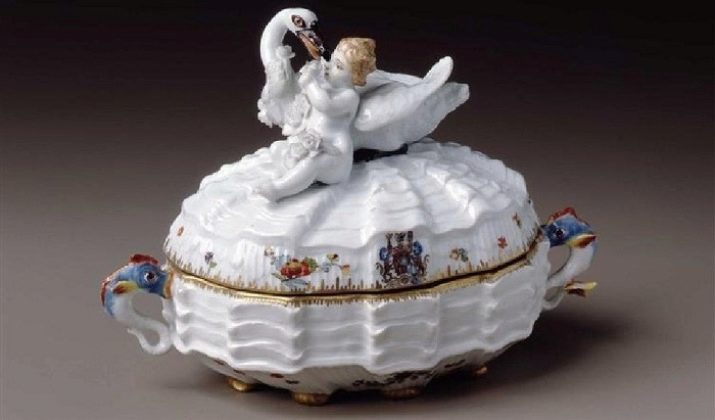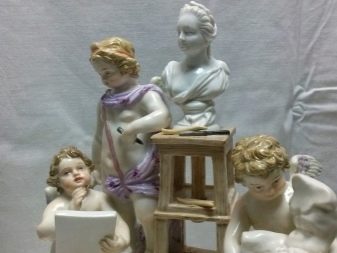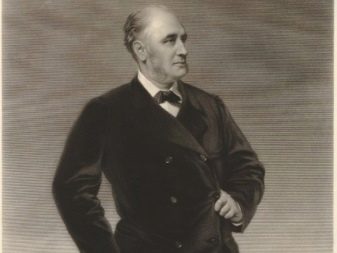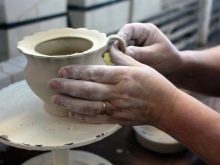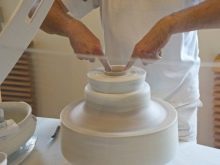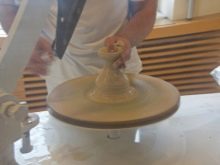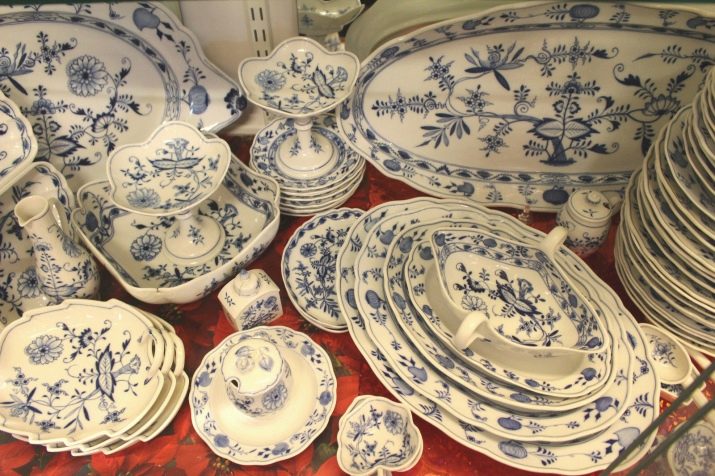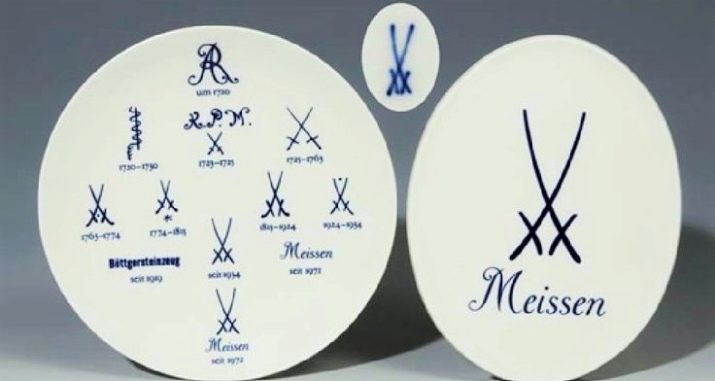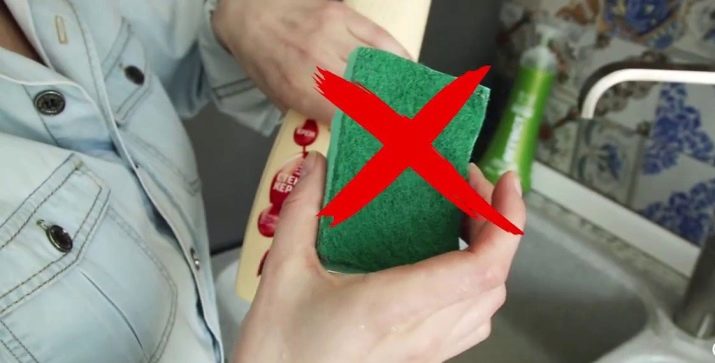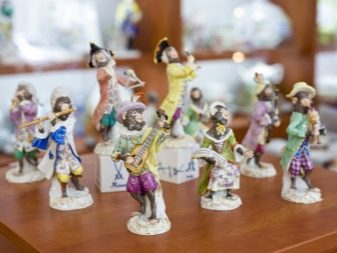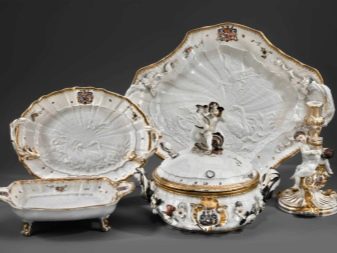You do not need to be a collector, you just need to be considered an educated and cultured person to imagine what Meissen porcelain is. If you have not heard this word before, but have begun to be seriously interested in dishes, then without familiarization with this brand is not enough.
History of creation
Meissen porcelain has been produced for three hundred years now - it is impressive and creates a considerable stir around German products. Porcelain products are considered the property of Germany: they are exhibited in the most famous museums of the world, they also become the long-awaited lots of private auctions. They admire and sing the praises of this porcelain, try to unravel the secret of production. The lucky ones can buy a porcelain product in their collection.
It all began in the city of Meissen (formerly Meissen) near the famous river Elbe. The city is old, it is more than 1000 years old. A significant event for the city was the construction of the Albrechtsburg castle in the 15th century. When the king of Saxony, Augustus the Strong, ascended the throne, the castle underwent a reconstruction. The craftsmen began to punch palace ceilings, install stoves, and in the halls they began to make wooden partitions. For a time, the castle looked like a large building with boxes, pots and various tools: as if the soil was growing for the appearance of porcelain.
In 1710, a truly grand event happened: porcelain was invented in Europe, but we cannot know how exactly this happened. The recipe of European porcelain is still classified. Why he appeared in principle, we can assume. Augustus the Strong was a very ambitious ruler, he clearly monitored the economic benefits of various objects, and he was not satisfied that Albrechtsburg Castle was not used to its fullest power.
Finally, the famous Chinese porcelain was too expensive, and the thoughts of creating your own, no less beautiful, must have seriously taken care of Augustus the Strong. And he found a man who was able to unravel the Chinese secret of production (well, or approached this). So, the German alchemist Friedrich Bettger managed to become a master who performed a small miracle - it was he who invented solid European porcelain.
The material itself began to be produced in the castle, over time, workshops were built specifically for production purposes, and in these workshops, and now white gold is being produced. It was a breakthrough, Meissen became known throughout Europe. In the suburbs of the city there was a place where the main component for making porcelain was found. A small mine was built at this place, and kaolin was mined exclusively for the Meissen manufactory. So called clay of the purest white color, fire-resistant and transparent. It organizes excellent plastic in the manufacturing process, serves as an ideal porcelain material.
Not one factory tried (and tries) to solve the formula of Meissen porcelain. What specifically happens to kaolin, quartz, and feldspar during production is still known only to the chosen ones. It is not known in what proportions the components are mixed, how they are stored. This is a big secret that has allowed the famous brand to be considered the flagship of world porcelain production for several centuries. Though not the noblest historical manipulations connected with a secret were made more than once.
The porcelain maker did not tell anyone about the recipe; the workers knew only a certain stage. And when Bettger died, one of his entourage, the keeper of the secret, simply fled to Vienna and wanted to develop his manufactory there.True, Augustus Strong achieved that the traitor was returned to his homeland.
And this return was the right move: Johann Herold came to Germany with Stolzel, who did a lot for production.
Company logo
Authentic Meissen porcelain is not easy to buy, the product must have a stamp. Fraudsters use this and put fake brand names on products. It is easy to find samples of true signs and see how they have changed over the years, and what are their features. Often, one cannot do without expert opinion: he will appreciate the full quality of the stigma, as well as the quality of the decoration.
Since 1948, the manufacturer has placed annual signs, and these annual labels can also be considered a code of authenticity. At the factory, this was taken more than seriously: the strictest quality control made it possible to prevent marriage at the release. If there was a flaw on the product, it was rejected or sold to craftsmen as a second-rate product.
But, by the way, such home murals are highly valued: they are considered more expensive than the factory ones, as they are exclusive and store all the features of the author’s handwriting. In this case, changes were made to the brand: if the body was damaged, one line was put, two or three - if the decor was damaged.
The study of the stigma, brand, its variations and artful fakes - something like a historical detective story. Fans of antiques will not run out, nor will fraudsters who want to make money on it.
Artists and styles
As is known, porcelain was invented in China. For this reason, the first decades of Meissen porcelain were painted with Oriental motifs. Recognizable herons in the reeds, fishermen, ornaments, flowers - that is what flaunted in the first works. Johann Gregorius Gerold preferred to work in the Japanese style "kakiemon". Japanese artists were restrained in colors, but Gerold learned how to get colors in a new way, and thanks to this skill the color gamut expanded to hundreds of shades.
In 1731, Johann Joachim Candler came to the porcelain business. To this day he is considered the main sculptor of the famous enterprise. His birthday and today is celebrated: for example, in 2006, they celebrated 300 years since the appearance of the legendary artist into the world. The creator was a genius of his time: he created at least 1000 miniature sculptures, he even managed to sculpt bird life-size figures.
And samples of table porcelain by Kendler are beyond praise.
He had many imitators, he became a classic of this artistic direction: the bends of pens in the turetes he invented, complex floral decorations, elegant angels and poured fruit became models and ideals of this art. Styles changed, fashion turned sharply to the side, but nothing affected the splendor of bouquets and fruit placers on the Meissen tableware.
Following Candler, he continued the tradition of porcelain luxury by Michel-Victor Asya. His arrival affected the production: white unglazed porcelain, sponge cake, was in vogue at that time. He became the perfect canvas for figurines on a mythological theme. Interestingly, art historians still argue about Asya: some claim that he was the best, that he created authentic Meissen porcelain, others say, no, he cannot compare with Candler, while Asya the quality of goods has decreased.
Meissen porcelain has also included names such as Hermann Seilinger, Hugo Stein, William Baring, Otto Edward Voight. Not to mention Paul ShoyrihaHe mainly worked in the style of Art Deco, and it was this master who created the famous Russian Ballet series, which originated in connection with the legendary performances of Dyagilev's ballet in Berlin. Styles varied, but the rococo remained at the base.
And even the spirit of expressionism, which was visible in the painting of vases and plates in underglaze blue, did not become more famous than the rococo style porcelain.
Manufacturing process
Masterpieces from Meissen are impeccable quality control, the use of various mixtures, the creation of a wide range of products.
Mix master prepared in several stages. First, they mix the ingredients strictly according to the recipe, then they crush everything very well, add a little water and mix until homogeneous. Using a filter press squeeze out excess moisture.
The mixture is necessarily deaerated with vacuum, due to which air particles are removed from it (they, in turn, get into the mixture during crushing and subsequent stirring).
Consider the features of production.
- And until now potters take part in the creation of Meissen masterpieces, they activate a potter's wheel with a foot. Wet palms of the master clasp the workpiece, which spins on a circle, the surface is cleared to homogeneity. After this, the master can manually change the shape of the product.
- Next, the workpiece is placed in a rotating plaster mold: the master puts pressure on the soft internal walls of the workpiece with a sponge, so the relief and structure of the matrix is transferred onto it. With this technique, create cups, bowls, teapots, jugs and other utensils.
- After half an hour, the product is removed from the gypsum matrix. The form is divided into several segments, which allows you to remove it without deforming the product. For the matrix, gypsum is used, which absorbs a part of moisture, which increases the coefficient of strength and reliability of the product.
- Flat dishes are made differently. The master cuts off the clay layer in size, it is placed on top of the form. In order for the product to acquire external contours, the second form from above is used (it is also responsible for the wall thickness). Then on the back of the product bats number.
- The details of small objects are classically molded, but the handles of large ones are molded. The handles are subsequently glued with a liquid solution - slip.
Many of the nuances of creating dishes and figurines are known to modern masters, but not all. Keeping secrets and loyalty to them allows the Meissen brand to continue to develop, because its tea pairs, vases, tureens and plates do not need advertising.
How to verify authenticity?
Porcelain from Meissen is faked from the very beginning of its existence. In 1772, a trademark was invented - two crossed swords, it changed over the years, but the essence remained the same. Under the swords today there is an inscription Meissen, this suggests that such a product was made later in 1974.
Interestingly, the fakes are so skillful that the average buyer is not able to understand the authenticity of the product. Many experts claim that to say for sure, you bought a real antique or a beautiful fake, only representatives of the manufactory can. Not everyone can get such an expert assessment, but if you buy something that is positioned as an old Meissen porcelain, you will certainly enlist the help of specialists.
The product is too expensive to pay for a fake (although it is fair to say that some fakes are surprisingly good).
Care rules
Thing fragile, requiring careful maintenance. And the older the product, the more trembling the owner is. Even if you bought modern dishes or a vase of a famous brand, you will need to learn how to properly care for it.
- Wash the porcelain can only be done by hand, you can not do it on weight, under running water. Put the product in a plastic container, spread a soft towel on the bottom.
- Water should be warm, but not hot. All products with handles need to hold the body, gently supporting the bottom.
- From household chemicals should be completely abandoned. The maximum that you can afford is a neutral baby soap. In the presence of stains and muddy spots can be dripped into the water a little ammonia.
- Outside, porcelain is sometimes rubbed with a light solution of hydrogen peroxide.Inside, porcelain can be wiped with diluted tooth powder.
- Brushes, sponges and scourers are not used, only soft cloths can participate in the process of washing porcelain. Teapot spouts are cleaned with a fine brush for baby bottles.
- Porcelain products do not leave in water for a long time - sometimes because of this, cracks form on the enamel. Rub the dishes when washing is also not necessary.
The most valuable antiques are better not to wash at all, just brushing the dust from it with a special brush or a cosmetic brush with a natural bristle.
In 2010, the world-famous German manufactory celebrated its 300th anniversary. On the occasion of the anniversary, the masters made replicas of the products that glorified it - the Swan Set, the Monkey Orchestra and other sculptures. They were sold for a lot of money, although Meissen porcelain was never cheap.
See the history of Meissen porcelain in the video below.
